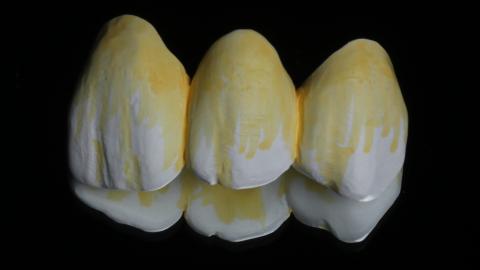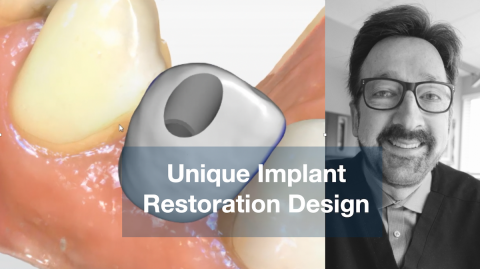Infiltration may not be necessary in every anterior zirconia bridge case. However, it will come in handy for cases with deeper cervical dentin saturation and does help in creating the illusion of separations for the pontic. This video will illustrate applying a single infiltration color using ZirCAD LT Coloring liquids on a ZirCAD MT Multi zirconia anterior bridge. When infiltration is applicable for the case, this is applied in the green zirconia condition, and the restoration is sintered using the added drying cycle in the CS6 and the SpeedFire.
Submitted by James Klim DDS, CADStar host on 05/29/2023 - 2:54pm
Submitted by James Klim DDS, CADStar host on 05/28/2023 - 1:13pm
With the evolution of aesthetic zirconia, I am finding applications for the anterior aesthetic zone. There is a trifecta solution that will enhance the outcome, shaping and texturing, infiltration, and application of MiYo Esthetic colors and glaze. With this combination of ZirCAD MT Multi, Infiltration, and MiYO Esthetic, I can now interexchange with e.max on anterior smile cases and comprehensive care. This video will demonstrate what we do when the zirconia comes out of the milling unit before sintering.
Submitted by James Klim DDS, CADStar host on 04/17/2023 - 8:46pm
The video will rate my favored Stain and glaze systems for ceramics and zirconia. The top of my list is Ivocoloar by Ivoclar, MiYo 850, and MiYo Esthetic by Jensen. These systems are taking our monolith restoration to a new level. Do we need them all, or is there a universal option?
Submitted by James Klim DDS, CADStar host on 03/22/2023 - 12:42pm
MiYO 850 has transformed my aesthetic clinical theater for e.max. By adding 850 glaze and colors for the crystallization firing, saves significant clinical time, and elevates the aesthetic outcome for e.max. This video is the one-step for creating a natural incisal edge and applying the glaze and colors on a blue e.max block.
Submitted by James Klim DDS, CADStar host on 02/09/2023 - 6:52pm
Submitted by James Klim DDS, CADStar host on 02/03/2023 - 1:06pm
So here is my post-mill workflow, remove sprue, customize the primary, secondary, and tertiary texturing features, and place one application of 850 MiYO glaze and color. Sounds simple; it is! My software design strategy is creating 95% of the tooth-shaped features in the software. Post-mill shaping and texturing become streamlined. This video is the post-mill workflow for a canine. Enjoy! Build your skill set, one video at a time.
Submitted by James Klim DDS, CADStar host on 01/20/2023 - 4:46pm
Submitted by James Klim DDS, CADStar host on 01/20/2023 - 4:36pm
Our current milling option is refining the e.max mill very well. Before glazing and coloring, a few finishing steps will dramatically improve the outcome. This video is the first video in a miniseries for the 850 MiYO application. However, this video will stand alone for other e.max glaze application options.
Submitted by James Klim DDS, CADStar host on 01/15/2023 - 9:27pm
850 MiYO is a game changer for creating aesthetic e.max restorations. I have been using 850 for about six months, and the ease of use and the aesthetic outcome has been the most significant results I have seen with glaze and colors in 20 years. This video will introduce the workflow by placing the glaze and colors before crystallization. The time savings and results will be incredible.
Submitted by James Klim DDS, CADStar host on 12/28/2022 - 7:53pm










